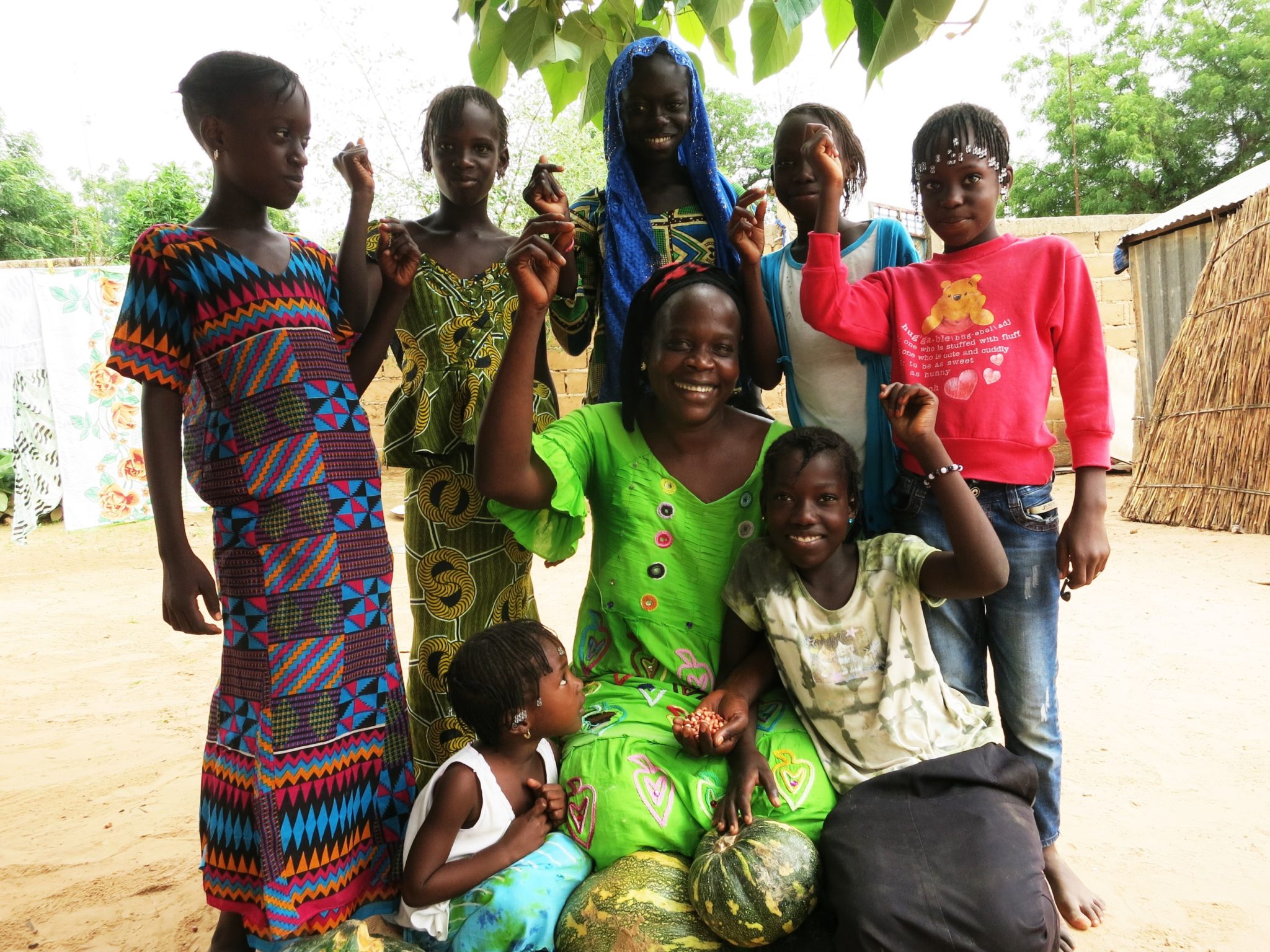
Arame Diop takes her myAgro package with pride at delivery.
Through the hustle and bustle of the delivery site in Toubatoul, Senegal, a myAgro field agent lifts up his smartphone and reads off the next name: “Arame Diop!” he shouts.
A smile comes across Arame’s face as she gets up and walks with pride to take her package of hibiscus seeds and fertilizer. She’s happy knowing that this package is hers; she paid for it using her own funds, and so has no debt to pay off.
“I’m really happy to be here to get my products,” she says, “Above all I know my family will be happy to see me come home with my products. For all the curious people asking me about where I got my inputs, I’ll be very proud to tell them how I got here by paying for six months, and how it’s the big day for me to get my products.”
Of the millions of smallholder farmers around the world, only 7% have access to financing through traditional banks and microfinance institutions. Whereas the current system assumes that smallholder farmers are too poor to save, myAgro knows that smallholders simply need an alternative system that matches how farmers already manage their money.
For the farmers that do manage to access microcredit, problems often result from the struggles to pay back loans.
“I used to take out loans to pay for seeds,” explains myAgro farmer Colly Diouf, “I paid 5,000 CFA (~$9) in advance to take out the loan, and then paid back the credit plus interest after harvest; this was difficult because I either had to pay off the debt during school enrollment and couldn’t pay for other needs, or I would not pay back the full loan and have to keep paying it off.”
Traditional financial institutions do not consider savings a viable option for farmers, because they believe that farmers have no money and require up-front loans to pay for agricultural inputs. In fact, many farmers have money, but financial tools are not designed to help them save their cash when they have it. This leads to counterproductive behavioral loops: Farmers are asset rich at harvest time but tend to spend down their cash over the year instead of prioritizing farm investments that they won’t need until months later. This behavioral loop doesn’t help them break the cycle of poverty – each season they are left looking for cash to purchase seeds or fertilizer and often must plant without improved inputs. Statistics around fertilizer usage in the region highlight the consequences of this problem. The average fertilizer use per hectare in Mali is 4 kgs per hectare compared to 10 kgs across Africa and 222 kgs in Asia.
“It’s not easy to save money,” says Colly Diouf, “If I try to store money in my house, if I ever need anything, I just take the money and pay for it.”
The combination of a lack of financial technology to match farmers’ needs and lack of available quality inputs means that farm families face many barriers to breaking free from poverty, leading to poor harvest results, food insecurity and urban migration, especially among youth; many qualified young people migrate to other nations in search of greater opportunity but often end up in low paying, informal, underemployment situations in Bamako, or other areas of the world.
Given these problems faced by smallholder farmers, what they need is access to quality inputs and an alternative, inclusive payment system that matches how they already manage their money. myAgro’s innovative mobile layaway system provides them with just that.
myAgro knows that farmers earn their money in small increments and have the most after harvest time. With mobile layaway, myAgro farmers (over 65% of whom are women) can start making payments right after harvest and continue paying for a few months until they’ve completed their packages. myAgro then delivers the fertilizer, seed, tools, and training they’ve paid for in time for planting season.
By investing their own funds in their farm inputs, farmers minimize risk by avoiding debt. They save their money in a way that’s convenient for them and that matches their current behaviors, making payments easy and stress-free.
“We’re not asking farmers to change their behavior to match an outdated financial system – we’re changing the system to match them,” says Anushka Ratnayake, myAgro Founder and CEO.
“It’s much easier paying little by little,” says Colly Diouf, “When you take out loans, you don’t feel free. But with myAgro you feel free because there’s no stress since you have nothing to pay once you complete your package.”

Colly Diouf with her children.
Farmers keep coming back to myAgro every year because they are experiencing the significant impact on their harvests and incomes. Last season, retention rates for farmers was 80%, vs. 50% on average across microfinance organizations. The program generates 50-100% increases in yields and 50%+ increases in incomes for farmers. In 2018 myAgro worked with 45,000 smallholder farmers, helping 450,000 people out of poverty. Farmers are overjoyed to be experiencing the benefits of mobile layaway and quality inputs.
“The biggest advantage of the extra income I have from myAgro is my children’s education. Now, during the time of school enrollment, I have no debt to pay off like I did before with the loans, so I can focus on paying their school fees. I don’t have to worry about them being the last to pay their school fees, because now they can be among the first,” says Colly Diouf, “I’m very happy working with myAgro; they’re improving my life.”

Colly Diouf after experiencing a bigger peanut harvest with myAgro.